I am shooting with a Skywatcher Quattro 250P, ASI2600MC Pro (APS-C), and the Starizona Nexus .75x FR/CC. When there is a very bright star just outside my FOV, I am getting light and diffraction artifacts, and maybe the shadow of one of the secondary spider vanes (?) from the star in my image. I have done various Google searches and I can't find anything on this issue. This shows light, diffraction artifacts and maybe a secondary spider vane shadow from Antares: Full res: https://www.astrobin.com/full/wey47s/B/?real=Med res: https://www.astrobin.com/full/wey47s/B/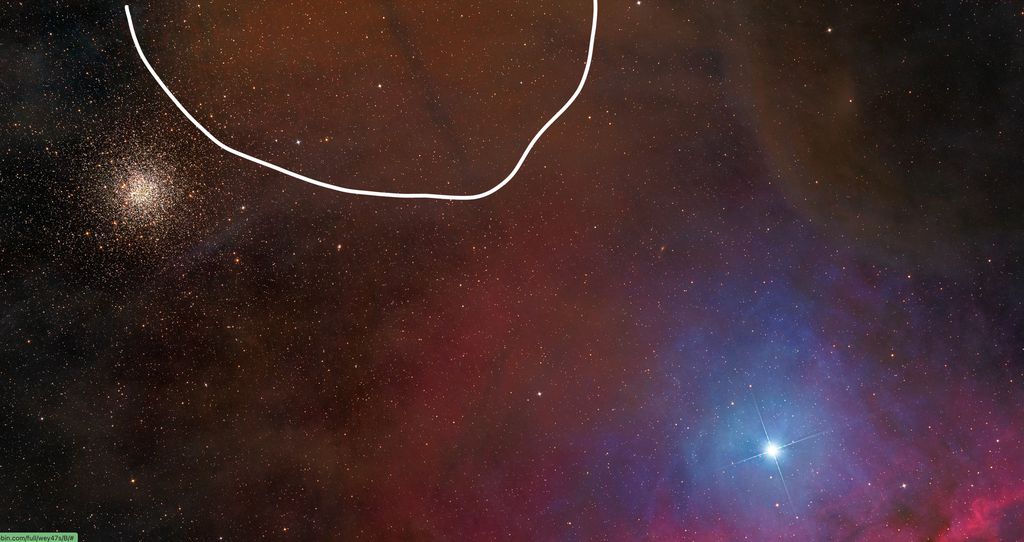 This is a two panel mosaic. Light from Ain is causing flare/brightness diffraction artifacts in the right panel. Ain was outside the FOV for the right panel of the mosaic. Note that the diffraction artifacts are somewhat truncated where the mosaic overlaps especially on the upper circled area. Full res: https://www.astrobin.com/full/ti1wyh/E/?real=Med res: https://www.astrobin.com/full/ti1wyh/E/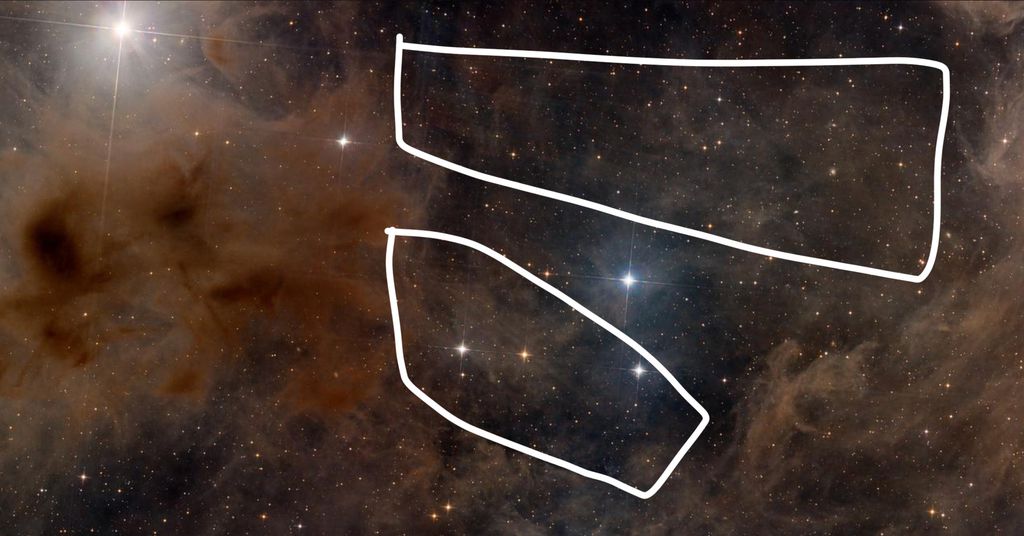 The best guess I have gleaned so far is that I could use a dew shield type shroud over the front of the scope when shooting near bright stars. These were both shot with an aperture mask, albeit one that did not have completely perfect coverage of the primary clips. I have a better aperture mask now, and I just flocked the inside of my OTA, but I don't know that that would help with this, (or anything, I figured it can't hurt). Do you think a dew-shield might help? If so, how long should it be? Any other thoughts/remedies? Am I just stuck with this issue? Any help appreciated. Thanks- Anthony
|
You cannot like this item. Reason: "ANONYMOUS".
You cannot remove your like from this item.
Editing a post is only allowed within 24 hours after creating it.
You cannot Like this post because the topic is closed.
Copy the URL below to share a direct link to this post.
This post cannot be edited using the classic forums editor.
To edit this post, please enable the "New forums experience" in your settings.
A dew shield or light shield (I use coke can cardboard from an 18-pack, velcroed on) does help. But if your star is right on the edge of the dew shield, then….😁
Tom
|
You cannot like this item. Reason: "ANONYMOUS".
You cannot remove your like from this item.
Editing a post is only allowed within 24 hours after creating it.
You cannot Like this post because the topic is closed.
Copy the URL below to share a direct link to this post.
This post cannot be edited using the classic forums editor.
To edit this post, please enable the "New forums experience" in your settings.
Tom Marsala:
A dew shield or light shield (I use coke can cardboard from an 18-pack, velcroed on) does help. But if your star is right on the edge of the dew shield, then....😁
Tom Thanks for the response, Tom! Roughly how tall do you make your “carbon fiber” (😜) light shield?
|
You cannot like this item. Reason: "ANONYMOUS".
You cannot remove your like from this item.
Editing a post is only allowed within 24 hours after creating it.
You cannot Like this post because the topic is closed.
Copy the URL below to share a direct link to this post.
This post cannot be edited using the classic forums editor.
To edit this post, please enable the "New forums experience" in your settings.
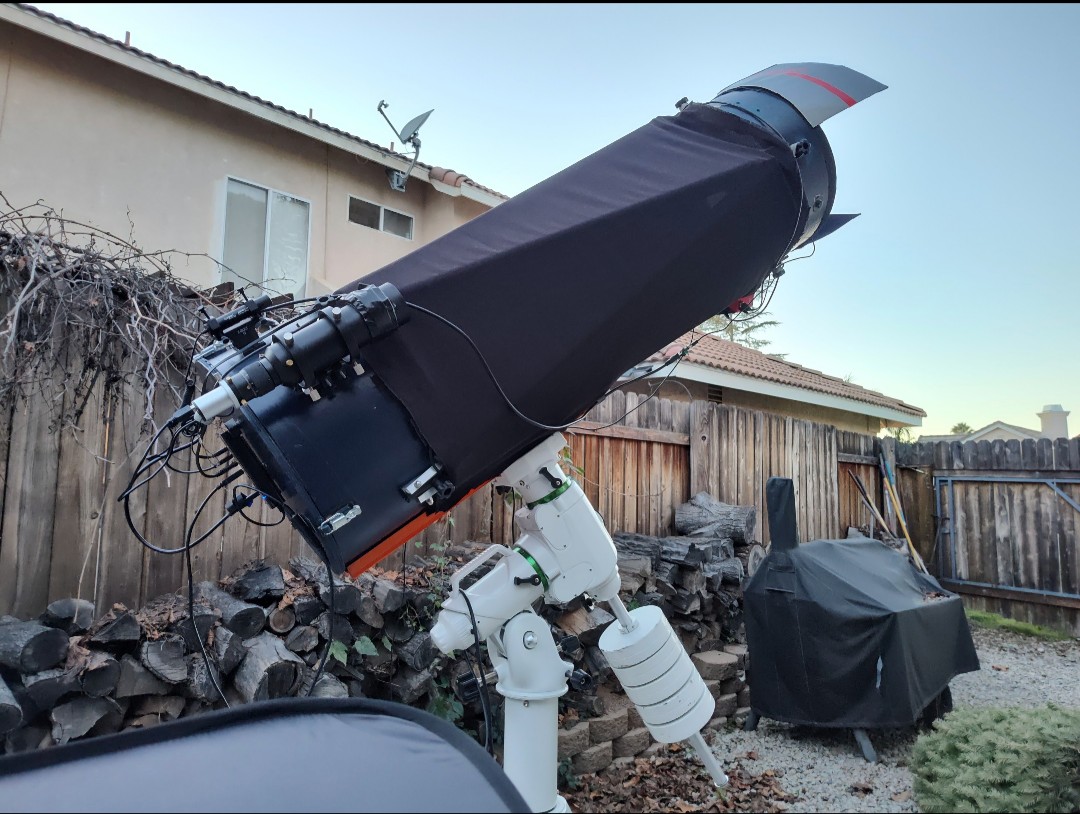 I would say they are about 12x14". One is directly opposite the focuser and the other is right over the focuser to protect the secondary. My secondary cage is pretty narrow. Carbon fiber, lol! Love it!
|
You cannot like this item. Reason: "ANONYMOUS".
You cannot remove your like from this item.
Editing a post is only allowed within 24 hours after creating it.
You cannot Like this post because the topic is closed.
Copy the URL below to share a direct link to this post.
This post cannot be edited using the classic forums editor.
To edit this post, please enable the "New forums experience" in your settings.
I made my Quatrro 250 dew/light shield from 10mm neoprene sheet. Pushes onto OTA by 50mm until it hits the spider vane knobs and extends 300mm from OTA. Works well to prevent/reduce dew in winter and address artefacts from Antares and Moon. Hope this helps, and good luck! 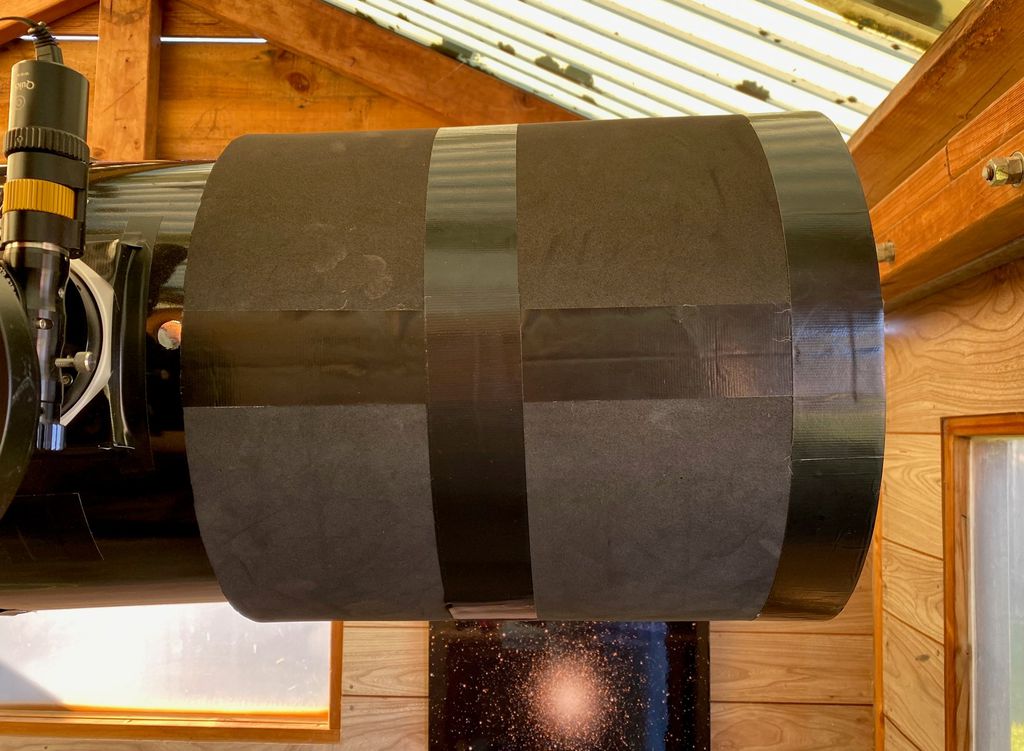 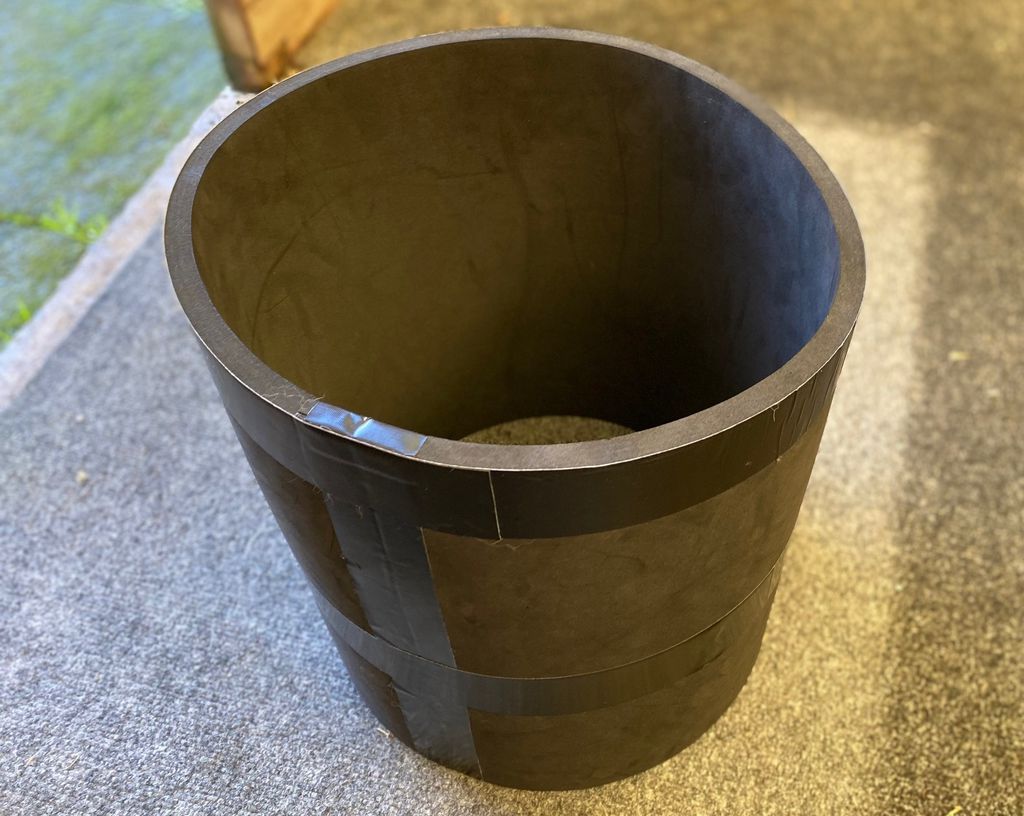 |
You cannot like this item. Reason: "ANONYMOUS".
You cannot remove your like from this item.
Editing a post is only allowed within 24 hours after creating it.
You cannot Like this post because the topic is closed.
Copy the URL below to share a direct link to this post.
This post cannot be edited using the classic forums editor.
To edit this post, please enable the "New forums experience" in your settings.
Jeff Coldrey:
I made my Quatrro 250 dew/light shield from 10mm neoprene sheet.
Pushes onto OTA by 50mm until it hits the spider vane knobs and extends 300mm from OTA.
Works well to prevent/reduce dew in winter and address artefacts from Antares and Moon.
Hope this helps, and good luck! Thanks for the response and confirmation Jeff!
|
You cannot like this item. Reason: "ANONYMOUS".
You cannot remove your like from this item.
Editing a post is only allowed within 24 hours after creating it.
You cannot Like this post because the topic is closed.
Copy the URL below to share a direct link to this post.
This post cannot be edited using the classic forums editor.
To edit this post, please enable the "New forums experience" in your settings.
Jeff Coldrey:
I made my Quatrro 250 dew/light shield from 10mm neoprene sheet.
Pushes onto OTA by 50mm until it hits the spider vane knobs and extends 300mm from OTA.
Works well to prevent/reduce dew in winter and address artefacts from Antares and Moon.
Hope this helps, and good luck!

 Great work Jeff! Ian
|
You cannot like this item. Reason: "ANONYMOUS".
You cannot remove your like from this item.
Editing a post is only allowed within 24 hours after creating it.
You cannot Like this post because the topic is closed.
Copy the URL below to share a direct link to this post.
This post cannot be edited using the classic forums editor.
To edit this post, please enable the "New forums experience" in your settings.
Not much for me to add other then I’m doing the same thing as @Jeff Coldrey @Tom Marsala with the exception of mine is made from kydex. In my case it’s on my 12” f5 and extends appx 10-12”. Works really well and I use it all the time unless I have a strong wind where it may cause guiding issues on my AP1200. Hope this helps! 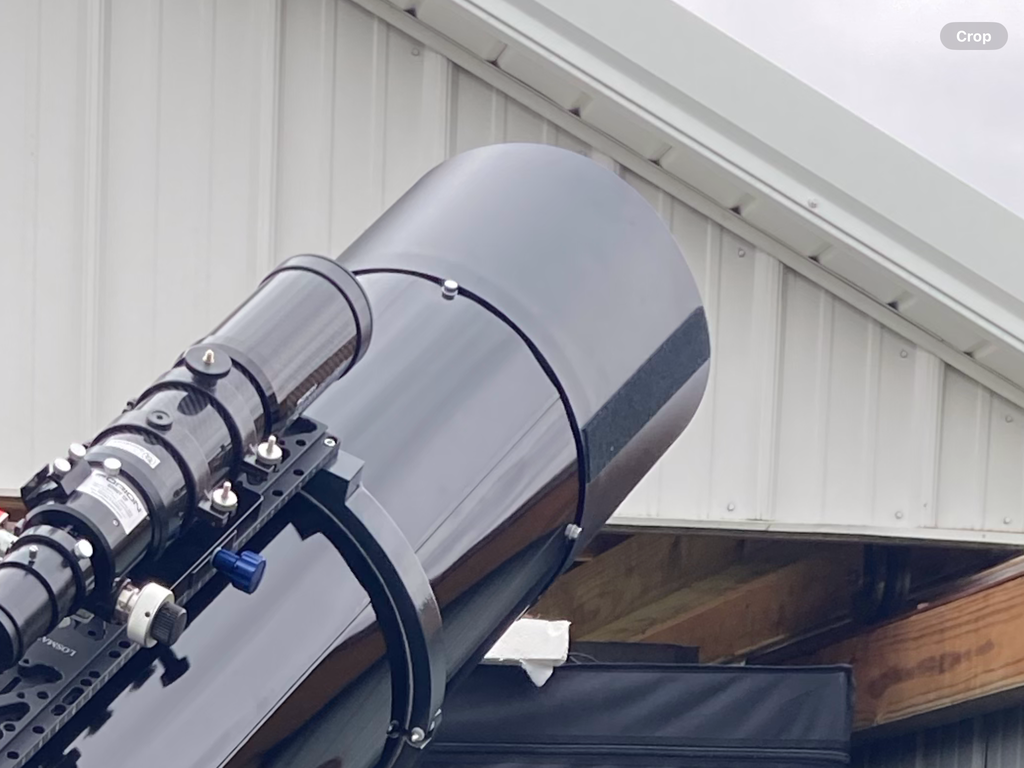 |
You cannot like this item. Reason: "ANONYMOUS".
You cannot remove your like from this item.
Editing a post is only allowed within 24 hours after creating it.
You cannot Like this post because the topic is closed.
Copy the URL below to share a direct link to this post.
This post cannot be edited using the classic forums editor.
To edit this post, please enable the "New forums experience" in your settings.
@Jeff Coldrey@Dale Penkala@Ian Dixon@Tom MarsalaDo any of you know any resources for a diagram or calculation for how much tube it takes to shield from light that is however far off axis? It’s probably dependent upon focal ratio, FOV, etc… There must be some science/engineering to this. It is (subjectively) remarkable to me that reflectors suffer from this with their primary lens buried so far down the defacto shield of the optical tube.
|
You cannot like this item. Reason: "ANONYMOUS".
You cannot remove your like from this item.
Editing a post is only allowed within 24 hours after creating it.
You cannot Like this post because the topic is closed.
Copy the URL below to share a direct link to this post.
This post cannot be edited using the classic forums editor.
To edit this post, please enable the "New forums experience" in your settings.
Anthony Quintile:
@Jeff Coldrey@Dale Penkala@Ian Dixon
Do any of you know any resources for a diagram or calculation for how much tube it takes to shield from light that is however far off axis? It’s probably dependent upon focal ratio, FOV, etc…
There must be some science/engineering to this.
It is (subjectively) remarkable to me that reflectors suffer from this with their primary lens buried so far down the defacto shield of the optical tube. Not offhand, Anthony, but I will research this.. its also interesting to me. Ian
|
You cannot like this item. Reason: "ANONYMOUS".
You cannot remove your like from this item.
Editing a post is only allowed within 24 hours after creating it.
You cannot Like this post because the topic is closed.
Copy the URL below to share a direct link to this post.
This post cannot be edited using the classic forums editor.
To edit this post, please enable the "New forums experience" in your settings.
Anthony Quintile:
Do any of you know any resources for a diagram or calculation for how much tube it takes to shield from light that is however far off axis? It’s probably dependent upon focal ratio, FOV, etc…
There must be some science/engineering to this.
It is (subjectively) remarkable to me that reflectors suffer from this with their primary lens buried so far down the defacto shield of the optical tube.Hi Anthony HI Anthony. Considering the geometry, I'm guessing it depends how close a bright off-axis light source is to the field of view. But all the light/dew shields I've seen extend by about the OTA diameter, plus a bee's whisker. Depends also on the type of bee. 😉
|
You cannot like this item. Reason: "ANONYMOUS".
You cannot remove your like from this item.
Editing a post is only allowed within 24 hours after creating it.
You cannot Like this post because the topic is closed.
Copy the URL below to share a direct link to this post.
This post cannot be edited using the classic forums editor.
To edit this post, please enable the "New forums experience" in your settings.
@Jeff ColdreyOTAs for reflectors are somewhat arbitrary in their length, as are any extensions. There is a length where the “hole in the sky” at the front of the tube from the mirror’s perspective would be the same as the FOV, but since we often run FRs or might switch to a larger sensor, that length would be variable. Not to mention, I suspect that that would make for a very long OTA. I am curious what the formula is for approximating how far the mirror should be from the front of the tube to shield from bright starlight at a given distance from the center of the FOV. I suspect many factors come into play. Fwiw, this is all conjecture and guessing on my part…
|
You cannot like this item. Reason: "ANONYMOUS".
You cannot remove your like from this item.
Editing a post is only allowed within 24 hours after creating it.
You cannot Like this post because the topic is closed.
Copy the URL below to share a direct link to this post.
This post cannot be edited using the classic forums editor.
To edit this post, please enable the "New forums experience" in your settings.








